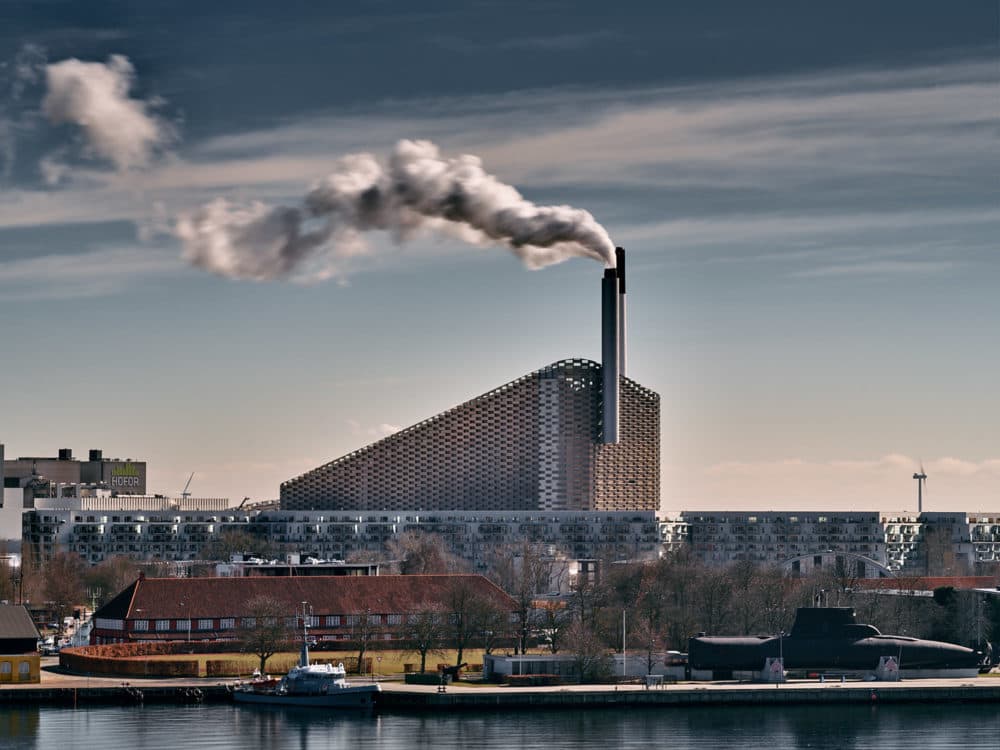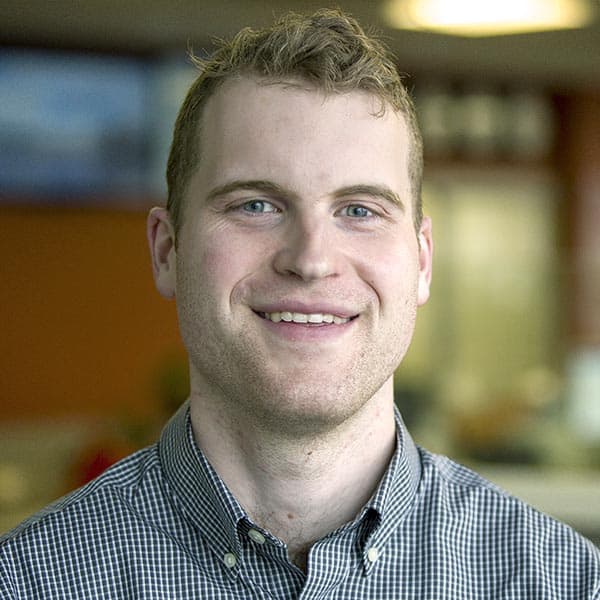Advertisement
Going To Waste
Cooled By Controversy In The U.S., Trash Incinerators Are Firing Up In Europe
Resume
Is your city or town tackling waste in an innovative way? Tell us about it, and we might dig deeper for a Here & Now story as part of our "Going To Waste" series.
Burning trash to generate power is controversial in the United States. Most incinerators were built decades ago and are blamed for health problems and pollution.
But in Europe, they're more accepted, newer and arguably cleaner. A new incinerator in Copenhagen, Denmark — which wants to become the world's first carbon-neutral capital by 2025 — sits conspicuously in the city center and has been turning garbage into heat since 2017.
It also has a year-round ski slope on top which attracts visitors, recoups some of the expenses and helps burnish the plant's "clean" image.
All but one of the roughly 75 trash incinerators operating in the U.S. are much older than Copenhagen's Amager Resource Center — the newest opened in Florida in 2015. Older plants had to be retrofitted with modern pollution controls in the 1990s to meet new standards. Peter Blinksbjerg, chief engineer of Amager, says he sees two key differences between incinerators like his and those in America.
"First of all is, when you come to the old plants, it's the boiler efficiency. A bad combustion process gives a lot of organic micropollutants like dioxins that have to be removed," he tells Here & Now's Peter O'Dowd. "The other ... is that the flue gas cleaning is much more efficient, and besides that, it takes out extra heat from the flue gas, which we in Denmark can sell for district heating."
Dioxins are dangerous, cancer-causing chemicals that build up in the body. There are other unsafe chemicals associated with burning garbage no matter how it's done: mercury, formaldehyde and nitrogen oxide, or NOx, to name a few.
"The organics, like dioxins or formaldehyde or benzene, [have] to be burned out through the combustion process. So it comes out as CO2 and water vapor, instead of coming out as dangerous pollutants," Blinksbjerg says.
Amager's combustion process places a premium on efficiency. But one side effect of that efficiency is the production of excess NOx — which meant efficient NOx-cleaning equipment was a must, Blinksbjerg explains. One method Amager relies on is the use of a catalyst: ammonia.
"Ammonia and NOx react to [create] nitrogen and water," he says.
Even though the incinerator scrubs those dangerous chemicals out of the process, it still releases some emissions. Environmental groups say even high-tech plants like Amager will release dioxins. But the laboratory that samples and analyzes Amager's emissions has found dioxin levels below the measurable limit, Blinksbjerg says.
The incinerator burns not only Denmark's waste, but also some from other countries, like the U.K. That imported waste would typically be bound for a landfill, Blinksbjerg says, adding it's "much better for the environment that it is combusted."
Waste in landfills releases methane, a powerful greenhouse gas, into the atmosphere. Waste that's incinerated does not. Importing garbage does leave a carbon footprint, however, because the waste is transported by ship from one country to another.
Besides what comes out of its stack, Amager produces ash, the bulk of which is the "same as sand," Blinksbjerg says. The component of that ash that's unsafe is taken away by a company Amager contracts with, which is able to further recycle it. What's left can be used for things like road building, Blinksbjerg says.
There are hundreds of plants like Blinksbjerg's across Europe, built after a European Union directive for member states to reduce waste in landfills. Blinksbjerg says it's difficult to say whether there is more political will in Europe when it comes to building these incinerators, or if there is a different philosophy about trash there altogether.
"There's a lot of politicians, also in Denmark, that want to have zero combustion," he says. "But when we look into the figures and see how much can be reused and recirculated, we end up with a rather large fraction that has to be done something with — either landfilled or burned in a waste incinerator."
Jill Ryan produced this interview and edited it for broadcast with Kathleen McKenna. Jack Mitchell adapted it for the web.
This segment aired on May 3, 2019.

